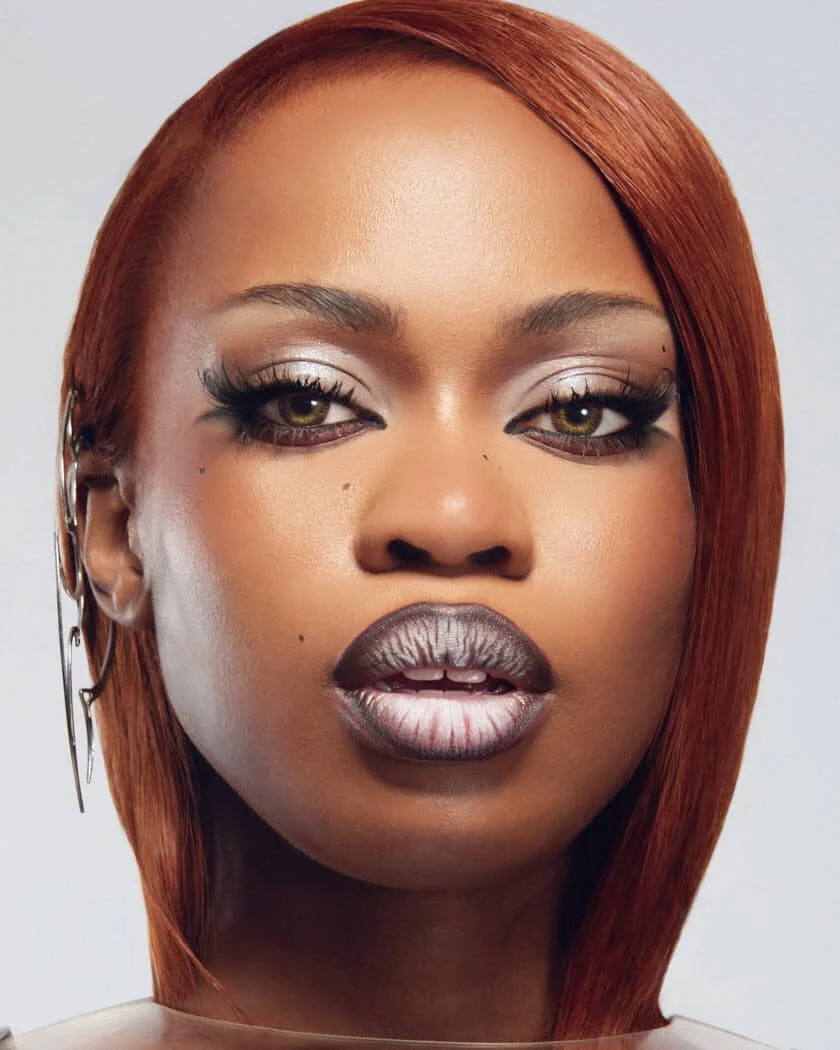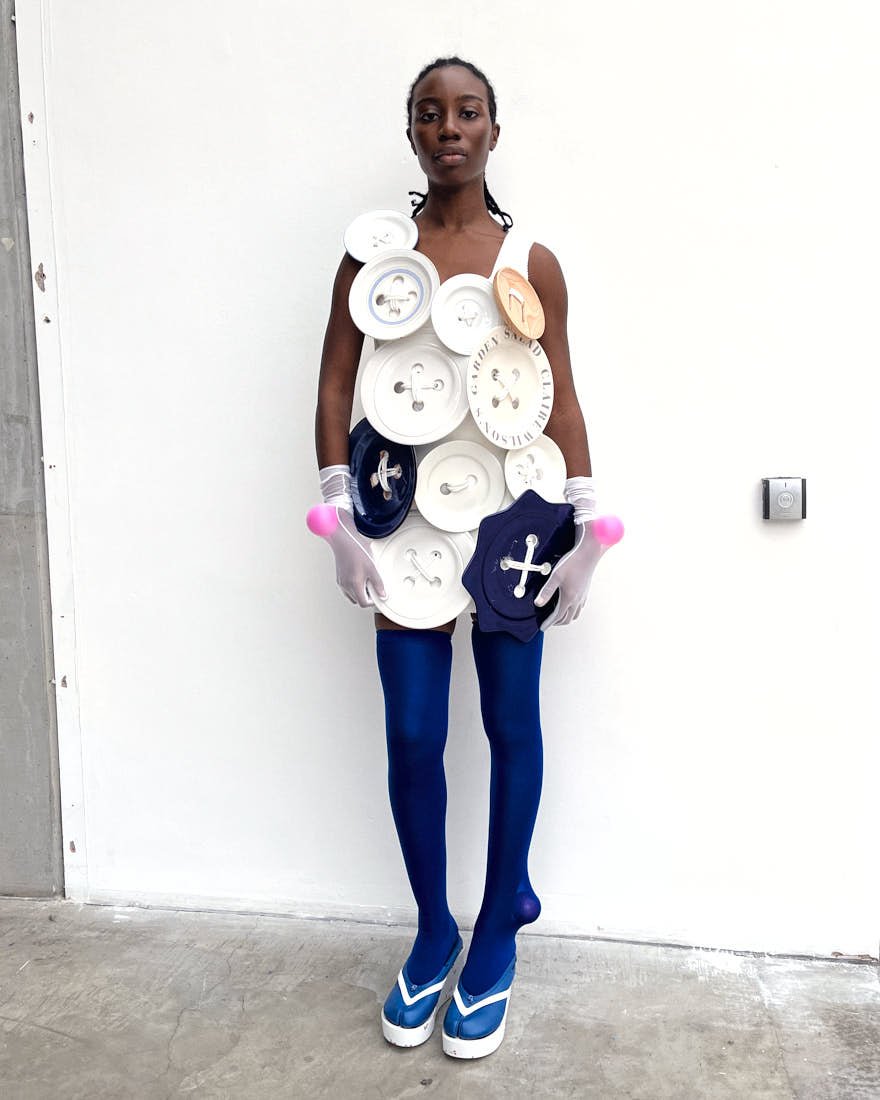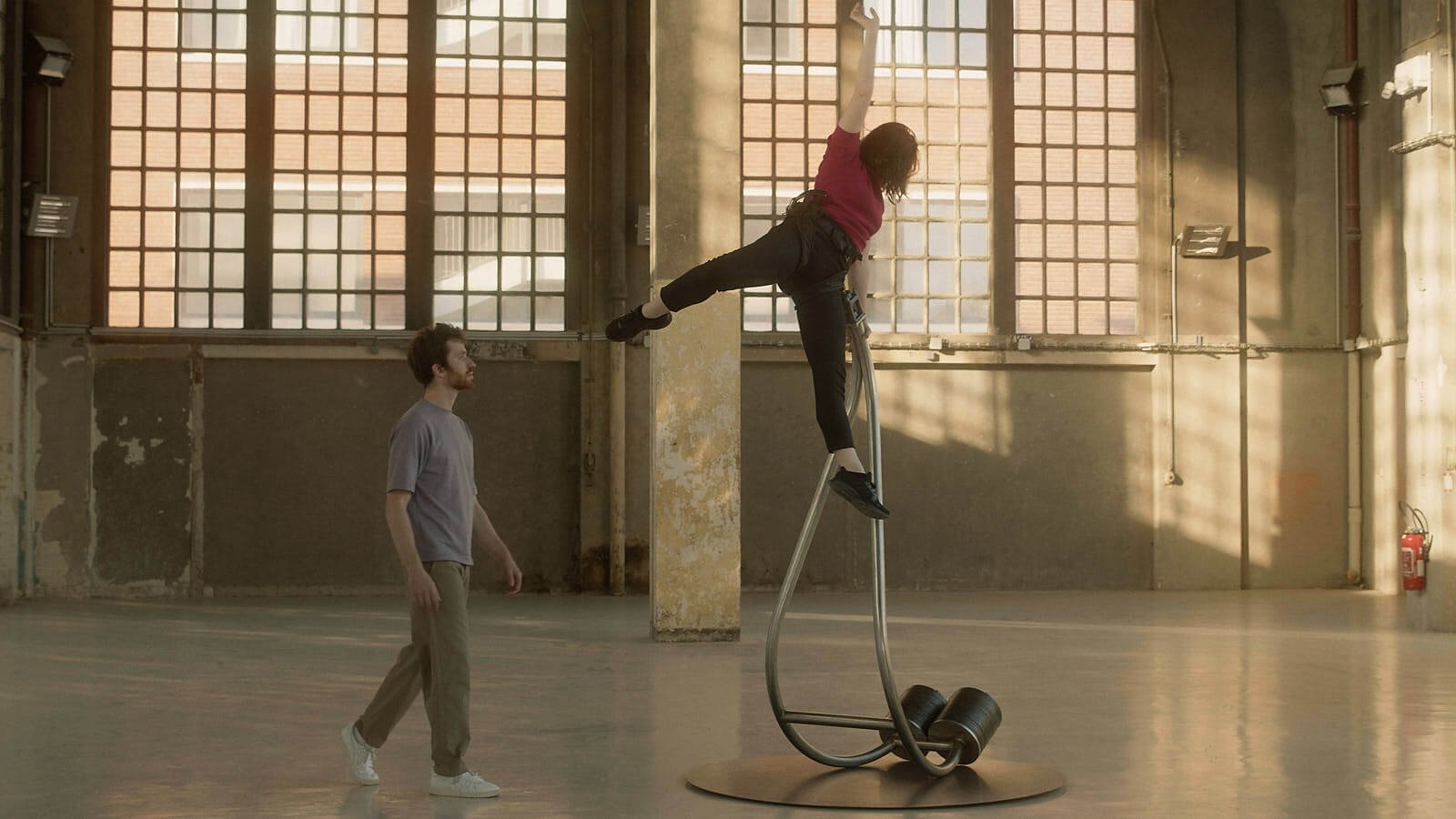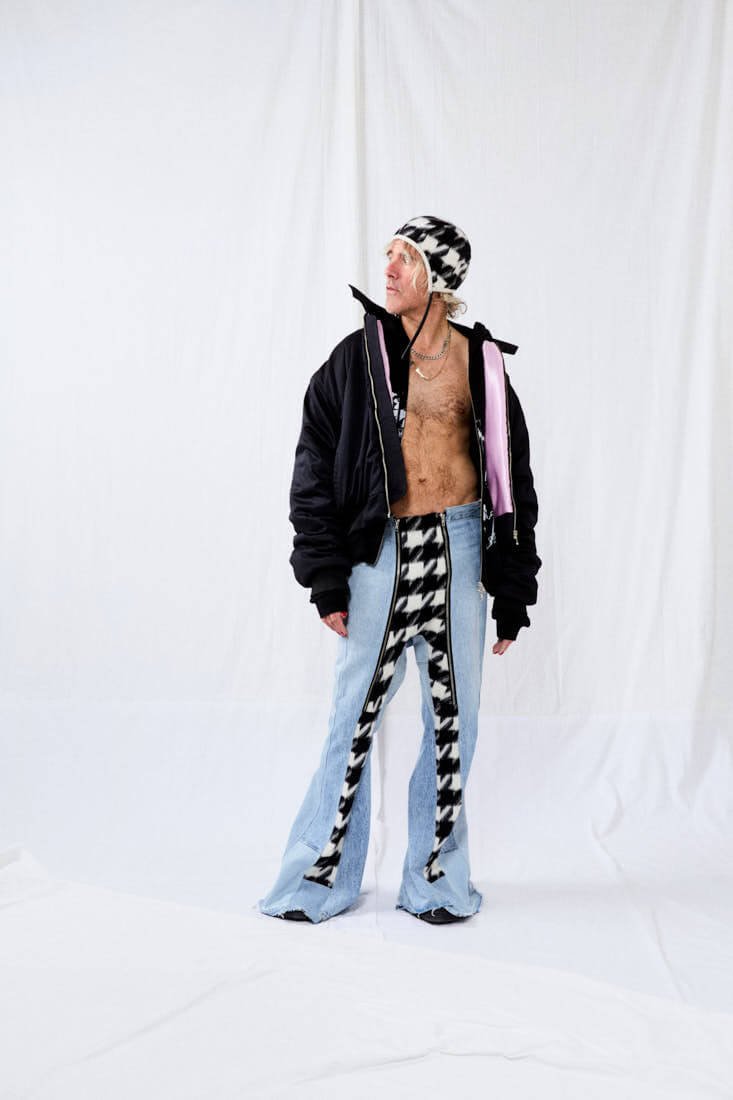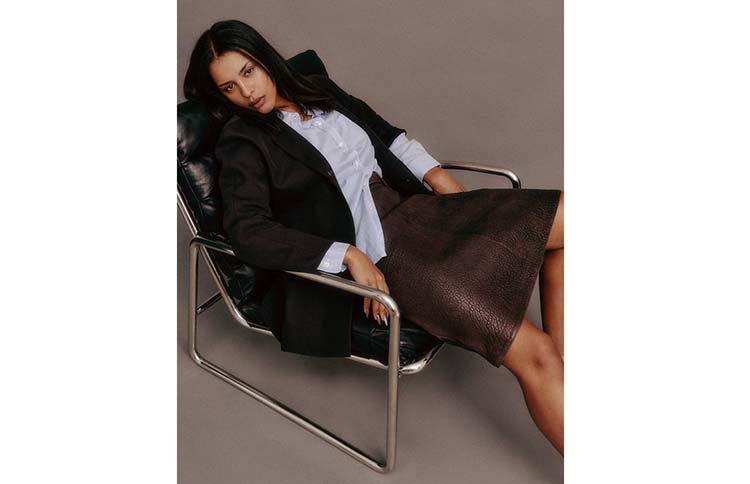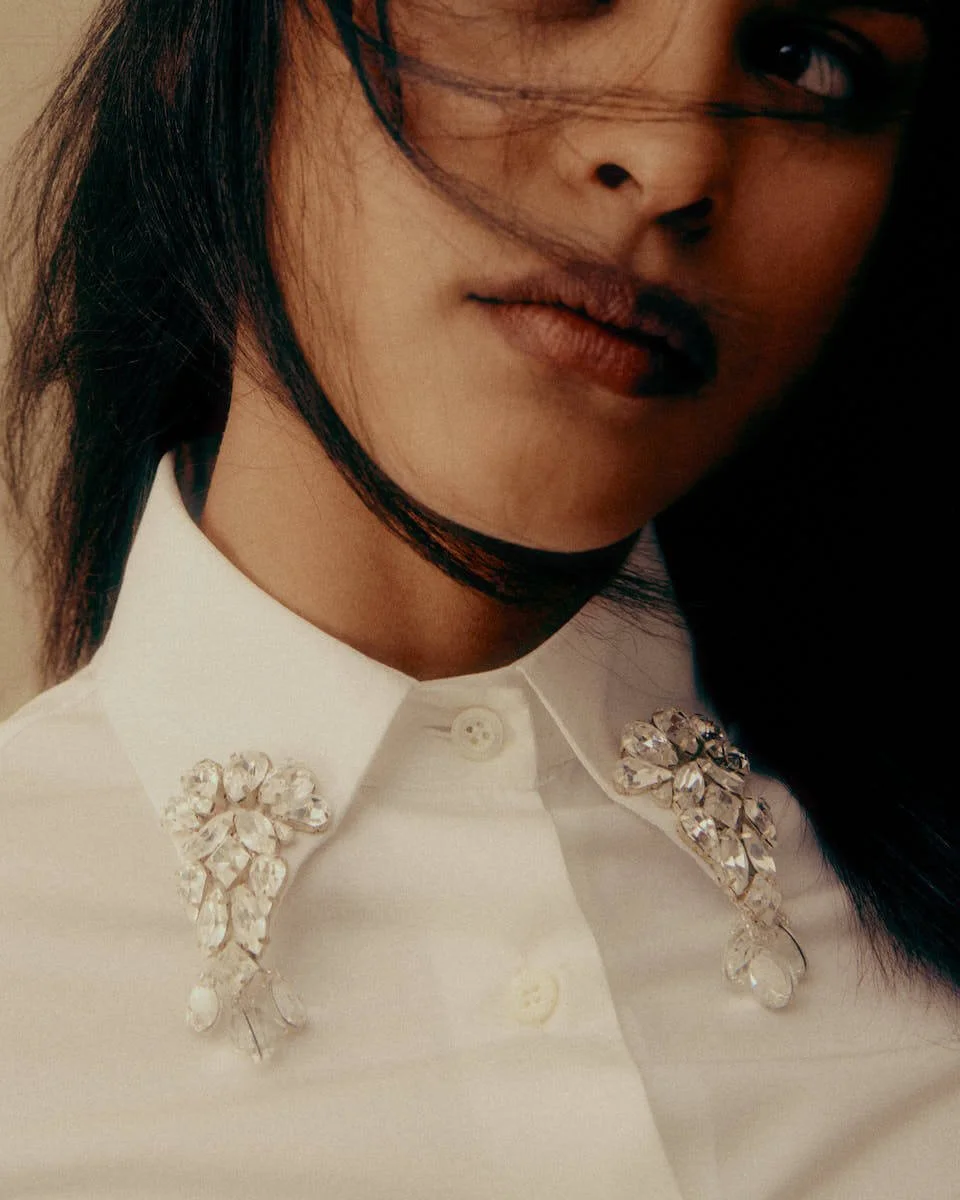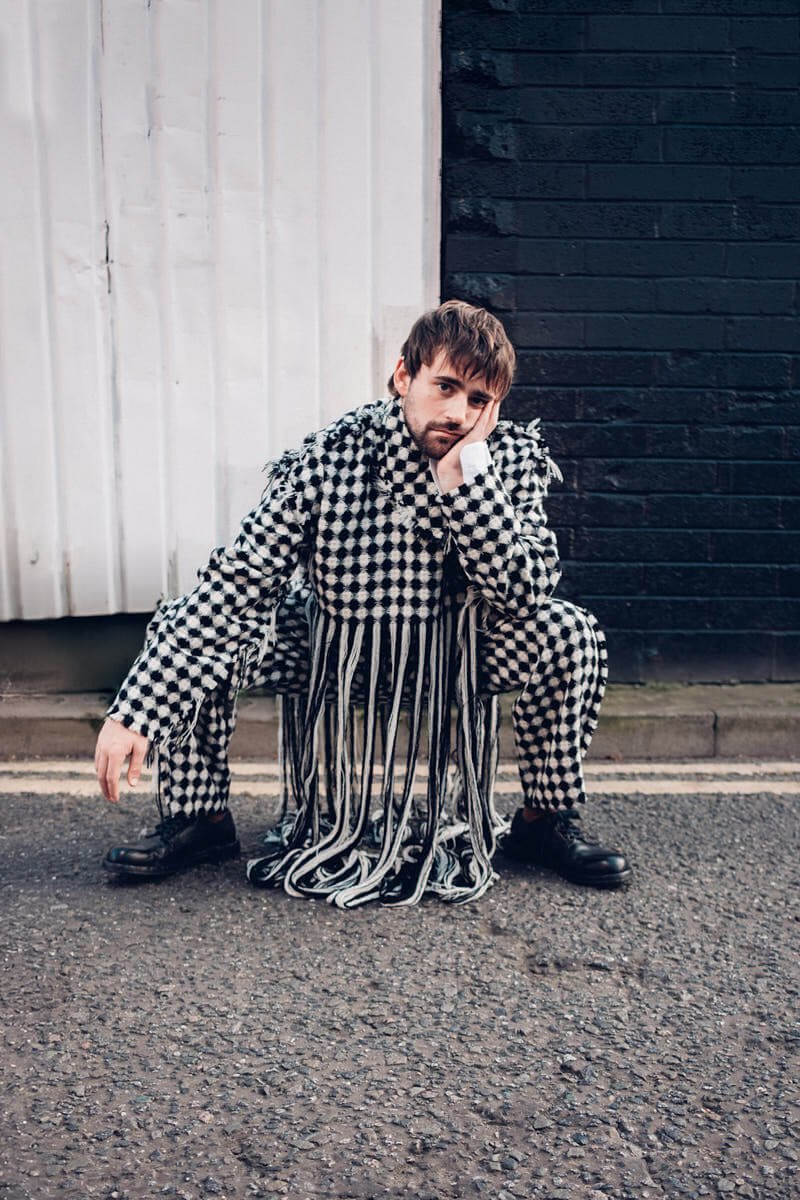.aesthetic talk
DETO BLACK
*Saves The Day
written + interview Hannah Rose Prendergast
In Deto Black’s educated opinion, sexy is a superpower. Outfitted in silver latex with an undergrad in social anthropology and a master's in global governance, she is a shining example of what it means to be multifarious.
headpiece ALIZEE QUITMAN
top ISSY BRIGHTMORE
thong POSTER GIRL
stockings ATSUKO KUDO
shoes CAROLIN HOLZHUBER
Sonically, her fate was sealed in 2020 with a hypnotic verse on Odunsi (The Engine)’s ‘Body Count. ’ In case you missed it, that number doesn’t matter to the chartered accountant. Aptly titled ‘Yung Everything, ’ Deto dropped her first EP the following year. Fashion-forward in all spheres, the “ass on his mind, foot on your neck” attitude will not quit. As a proud Naija Babe, setting us free from the evils of slut-shaming is incredibly close to her heart. Under the name Sex, Deto Black operates with her besties to make the world a wetter place.
“Sexy is a superpower.”
Deto Black speaks with Hannah Rose Prendergast
for LE MILE Magazine, Nr. 37, AGE OF CHANGE / 02/2024 Edition
ear cuff GREGORY KARA
Hannah Rose Prendergast
As a woman with two degrees, you have the peace of mind that there are no answers in life. Do you still have doubts about this? How do you maintain that wisdom?
Deto Black
I often overanalyze things, but knowing that fact gives me a bit of comfort. One of my favorite quotes is, “The man that knows something knows that he knows nothing at all,” by Erykah Badu.
Born in Delaware, your family home in Lagos, Nigeria, and living in London, you’ve formed your own culture. How has each place imprinted upon that?
Lagos will always be home in my heart. I grew up there, and it helped me develop self-confidence and thick skin. It was nice growing up around people who looked like me; that gave me a strong sense of self. Living in London opened my mind beyond Nigerian culture. I was able to experience other things, which also impacted my creativity. Summers and Christmas’s spent in the US inspired me to do things on a larger scale and taught me that the sky is the limit.
In Yoruba, your name Adetoun means “crown of my own” or “Princess. ” How do you think having that name helped you grow into it?
I never really knew the meaning of my name until I got older, but I definitely think names are manifestations. I can be a bit of a princess, but not the type that lives in a tower and gets saved. I’m more like the one who can defend herself and inspire people.
Not one to get stuck on labels, what made you embrace the term Nollypop?
It was one of my supporters on X. I posted a snippet of my song ‘Naija Babes’ and asked, what genre is this? There were a few responses, but Nollypop was the most fitting. I’ve always been really inspired by the Nigerian film industry, Nollywood. Back in the day, before I started music, I creatively directed a couple of my shoots with that aesthetic.
The video for Chi’s ‘Lizard People, ’ featuring you and Mowalola, dropped in spring. What makes this project so iconic, other than the obvious?
I love my girls. We create such iconic things together. The ‘Lizard People’ video definitely gives Death Proof vibes, which I love, and it really made an impact on the culture. Seeing three black girls depicted in that way is rare and just powerful. Chi, Mowa, and I have a band called Sex.
We wanted to create a girl group that supports women in the creative industry because we feel there aren’t enough of them. We make music, films, clothes, host parties, pretty much everything. It’s just a way to show that women can come together and create iconic things.
As an authority on female sexual empowerment, who do you think is missing from the conversation?
I think Nigerian women are missing from the conversation; very few of us speak on the subject or even want to associate with it. I find it ridiculous because Nigeria has the highest population in Africa, so let’s not kid ourselves.
Everyone’s fucking. Growing up in Lagos, sex was always such a secretive and demonized topic. I wish we had a safer space to discuss it. I think opening up that conversation will only make things better and, most importantly, safer for everyone.
Your mum has always been one of your biggest inspirations, a lawyer with a penchant for Louis Vuitton and Chanel who taught you that you could be anything and everything. How do you feel you’ve inspired her?
Aww, yes, I love my mom! She always tells me how proud of me she is. I feel like I inspire her to be even bolder and not care about the opinions of strangers. She has a completely different career, so it’s a bit different, but we are definitely very similar – my Aries Queen.
Fashion is your first love. What qualities (aesthetic and non) do you look for in clothing?
I think my taste changes over time, but I look for quality and uniqueness in everything. I want to look good but different and sexy, always sexy.
If you were a cartoon character, who would you be?
People always compare me and my friends to The Powerpuff Girls. Growing up, I felt like I was Bubbles, but now I’m a bit of Buttercup and Blossom because I’m the responsible but feisty one, allegedly.
I know you like to live in the present; what does the future hold?
I’m about to drop my second EP , which I am so excited about because I haven’t dropped one since 2021, so I’m really looking forward to it.
What was the last thing your gut told you?
Everything is working out in your favor.
sandals YING OU
“I can be a bit of a princess, but not the type that lives in a xtower and gets saved. I’m more like the one who can defend herself and inspire people.”
Deto Black speaks with Hannah Rose Prendergast
for LE MILE Magazine, Nr. 37, AGE OF CHANGE / 02/2024 Edition
production credits
talent DETO BLACK
creative + seen BRYAN TORRES
styled JADZIA SCOTT
producer ISABEL MARTÍNEZ-ZURITA
art direction PO TSUN LIN
make up CHELSEA UCHENNA
hair TAKUMI HORIWAKI
digital JEMMA HANSEN
light artists RENNATTO OLIVEIRA + ALEX JOSE
retoucher GUILLE SOTELO
nail artist CHAY
stylist assistants MARILENA ANGELIDES + YASMYN NTEGE
production assistant SOPHIE CHERRY
Thanks to TOO YOUNG TOO SIMPLE + GAS HIRE



